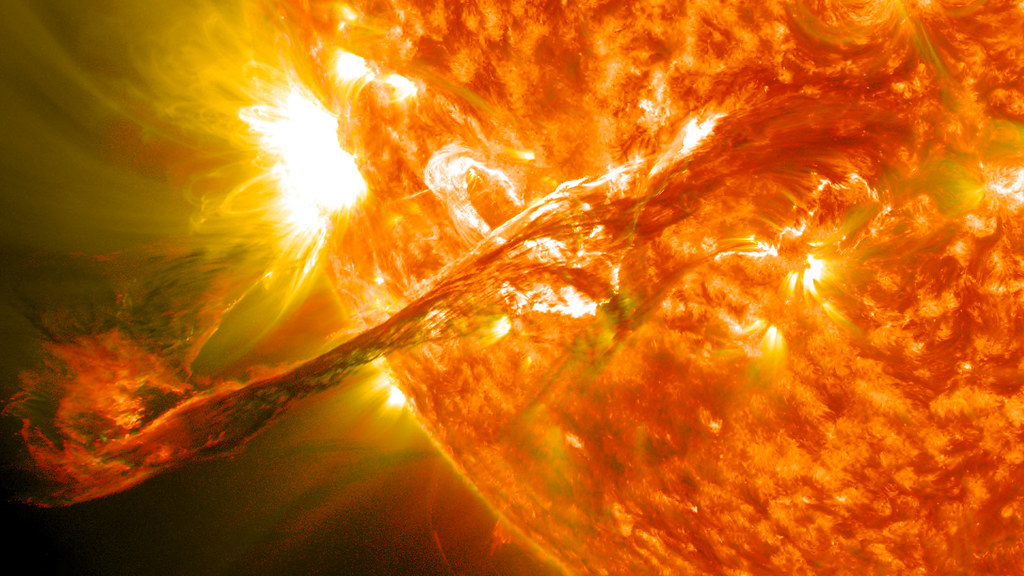Within the next year, all technology on Earth could be obliterated. Why? The poles of the massive, 10,430℉ fireball above the planet Earth are about to switch places.
In the last few years, the sun has been experiencing a period of high activity known as the Solar Maximum, originally forecast to begin in mid-2025. The current cycle, Solar Cycle 25, began in 2019 and was characterized by a minimal amount of solar activity. Now, in 2024, scientists are observing a massive increase in powerful X-Class Solar Flares and Coronal Mass Ejections (CMEs), both of which signify the coming end of this solar cycle.
The reversal of the poles itself does not pose a large risk to Planet Earth. However, both Solar Flares and CMEs can produce excess energy and radioactivity on Earth. A large enough CME could even cause an extinction.
In 1859, a massive CME named “The Carrington Event” created so much latent energy on Earth that telegraph operators could send messages across the globe without directly connecting their machines to electricity. This event caused issues across the world; according to History.com’s Christopher Klein, telegraph operators across the planet were showered in sparks, and “streams of fire” flew from circuits. This current period of activity could cause a similar event, which would be more dangerous than ever in the modern world. In order to protect Earth from massive CMEs, NASA’s Heliophysics laboratory developed an AI to predict, and protect against, massive solar storms. These events “would have even more severe impacts, such as widespread electrical disruptions, persistent blackouts, and interruptions to global communications[,]” said NASA in April 2023. “Such technological chaos could cripple economies and endanger the safety and livelihoods of people worldwide.”
The sun goes through a Solar Cycle every 11 years on average. These current higher-risk conditions will persist until the next Solar Minimum, which will be in about six years, but the heaviest solar activity will persist until the poles of the sun finish flipping.
But why does this flipping lead to an increase in solar activity? Like Earth, the sun has two magnetic poles: the North and South. According to Vox, these poles are around 6,500℉. This means that, while still considerably hot, the poles are“relatively cooler than the sun’s typical 10,000-degree surface temperature” and appear as colder, dark spots on telescopic observations of the star. The Earth’s poles flip much less frequently as compared to the sun; the last reversal was in the Stone Age (780,000 years ago). However, the Earth is unlike the sun in relation to mass ejection; the sun’s poles act as a containment field for the sun’s mass. Without them, the sun would eject massive streams of energy and go supernova, or explode. Supernovas are caused by a decrease in pressure holding the sun together; the poles provide part of that pressure.
As the poles reverse, they exert less of a force upon the sun and allow more mass ejection – like a supernova, but on a much smaller scale. The poles will exert the least force when they are at the midpoint of their switch, or the Solar Maximum. They will be the closest to the center of the sun at that point, and thus exert the least amount of holding force on the surface. During that period, all bets are off; the Earth will survive, but a massive solar flare could wipe out life as we know it. A lack of vital technology will launch us, as the human race, into a period of unknown disarray.
The Poles of the Sun are About to Flip – What and Why?
The NASA Goddard Telescope captured this massive Coronal Mass Ejection (CME) erupting from the sun in 2012.
0
More to Discover
About the Contributor

Owen Cruz-Abrams, Managing Editor
Owen is a senior and this will be his third year writing for the Skier Scribbler. He loves writing opinion articles.


























